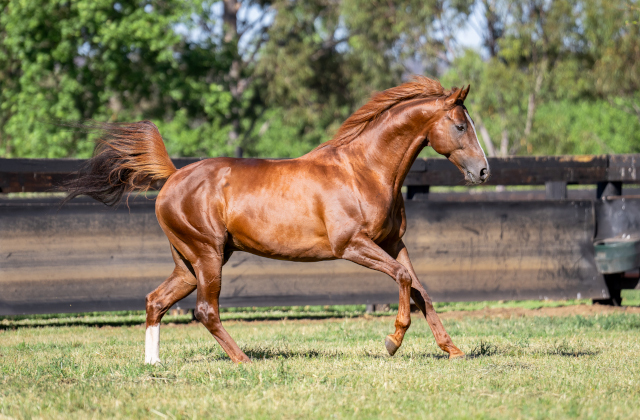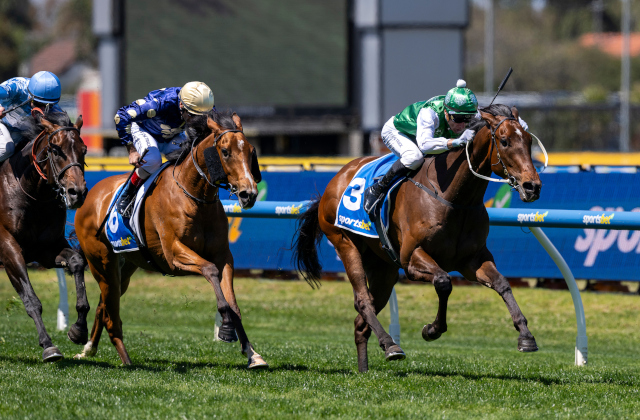Blue Skies ahead for NSW Racing

The past three years have been very testing for everyone who works and invests in the Australian thoroughbred industry, but I believe there are now real reasons to be optimistic about the future.
Pictured: The thoroughbred horse remains racing’s best asset – Black Caviar receives her fans at Moonee Valley on 2011 Cox Plate day. (PHOTO: Sportpix)
There is no doubt we have had a rough run. No sooner did we get through the EI crisis in 2007 than the GFC hit in 2008, followed by a depressed bloodstock market and then the AI challenge. Through all of this we have faced a steadily worsening ratio of prizemoney to racing costs at every level of the sport. It has been enough to drive the most ardent participant to despair.
However, good news is on its way. The first despatch is likely before or just after Christmas, in the form of what I hope and believe will be a favourable High Court decision on the race fields legislation.
Prizemoney, and specifically the relationship of average training costs to average prizemoney per horse, is a major driver of ownership. On this key performance measure Australia is an also-ran among racing nations.
It is true that most of us are sustained through horse-racing’s inevitable risks and losses by our passion for the sport and our experience of ownership. However, there is a point at which even the most enthusiastic, long-standing owners begin to wonder if there are more enjoyable ways to spend their leisure time and their disposable income. If we do not address the costs/prizemoney ratio, existing owners will drift away and they will not be replaced.
That is why a favourable result in the upcoming High Court judgement is critical to the health and future of NSW and Australian racing. To date Racing NSW is said to have collected about $150 million from wagering operators, and placed it in trust until the case is decided. If this amount is added to future annual product fees of around $60 million, then a serious lift in across-the-board prizemoney becomes possible.
The key is going to be distributing this additional revenue in a way that supports the broad base of horse ownership without killing owners’ aspirations for excellence. A real balance is required here.
Significantly, the Racing NSW board is being restructured under legislation introduced by the Racing Minister, the Hon. George Souris to improve its governance and decision-making. The decisions on prizemoney allocation will be among the first taken by the new board and must be made in the context of a clear action plan for the rejuvenation of NSW racing at every level – city, provincial and country.
Mr Souris’ activism on behalf of the NSW industry is another reason to be optimistic about the future. The resurgence of Victorian racing was driven by Premier Jeff Kennett and his Ministers who believed it could do better – that is, attract more tourism & investment, and generate more employment. NSW racing now has a decisive political advocate with a similar grasp of its economic potential, as well as an understanding of its role in communities.
The imminent renewal of Randwick’s infrastructure gives Sydney racing a wonderful opportunity to refresh the presentation and marketing of the sport to new and existing fans, owners and national corporate sponsors. That must include a new, exciting menu of racing for Sydney’s Autumn Carnival based on a review of its timing and content, and the creation of a destination meeting to match Flemington’s Cup Week. If that is achieved, we can look forward to more than positive change – it will be a completely new era in Australian racing.
The tide seems to be turning in the international bloodstock market too. The recovery of bloodstock values at the 2011 European and US yearling sales indicates that owners are returning to the marketplace despite poor economic conditions.
Australia is in better economic shape and racing still holds a distinct place in our culture. It is now up to our industry leaders to capitalise on those advantages. That means using our assets and income effectively to keep current owners and racegoers in the game, and adopting modern technology to reach new owners and fans. Rationalising racing’s specialist media assets and engaging with mainstream media must be high on the task-list.
The crowds that have flocked to English and Australian racecourses this year to see Frankel and Black Caviar remind us that our best asset is the thoroughbred horse itself, bred and trained for all that human beings admire in sport: speed, power, class and courage. Their impact on attendances is obvious, but most valuable is their ability to excite a new generation of racing enthusiasts – and remind the rest of us why we still love horseracing.


